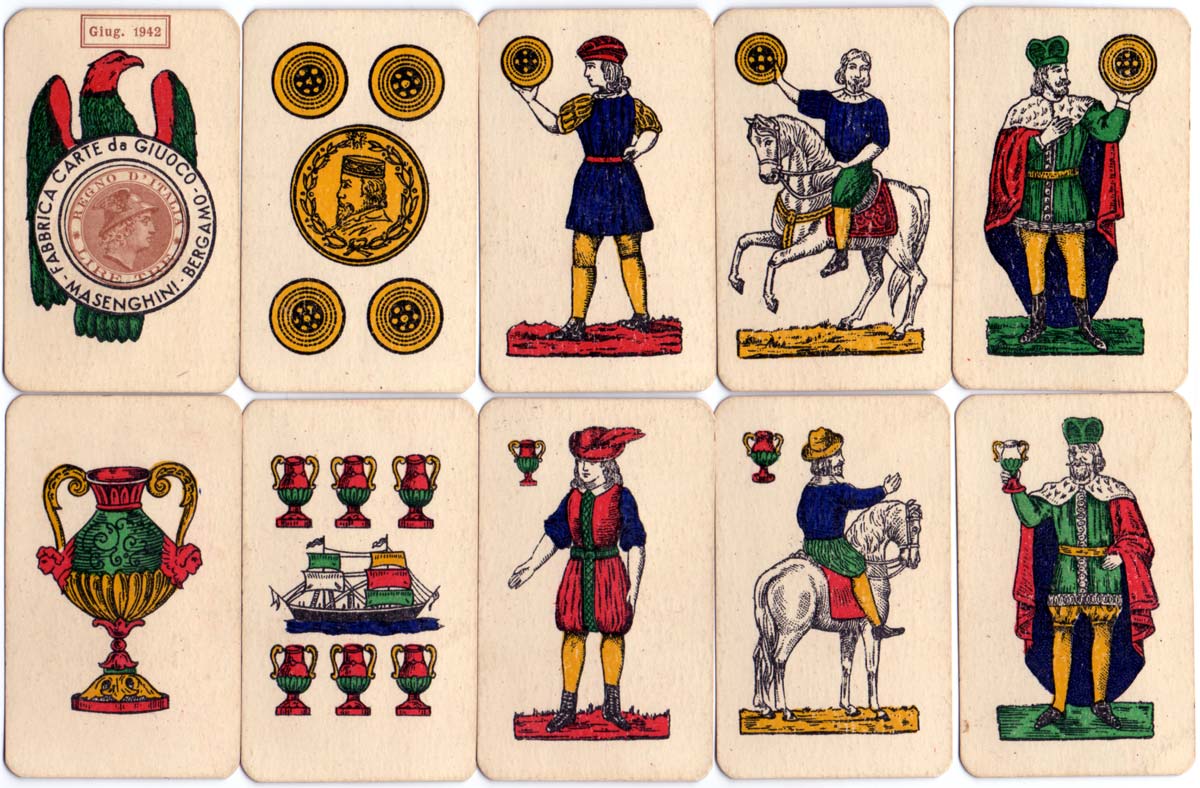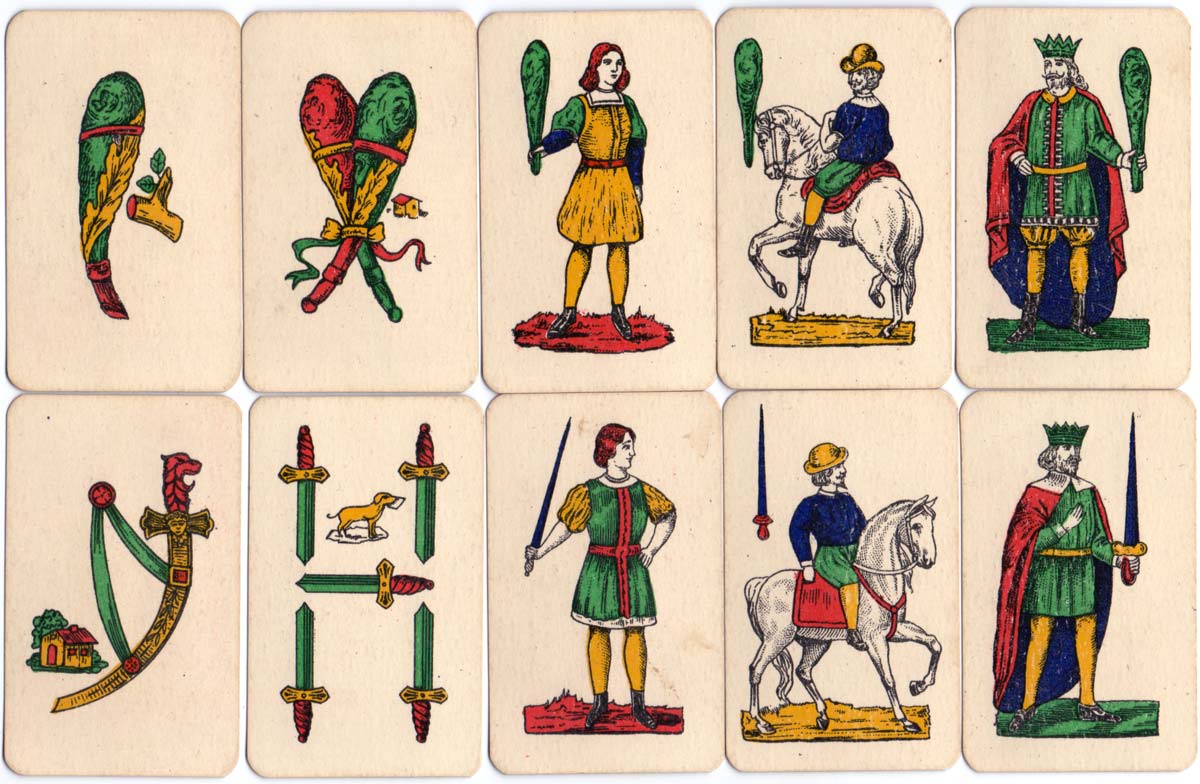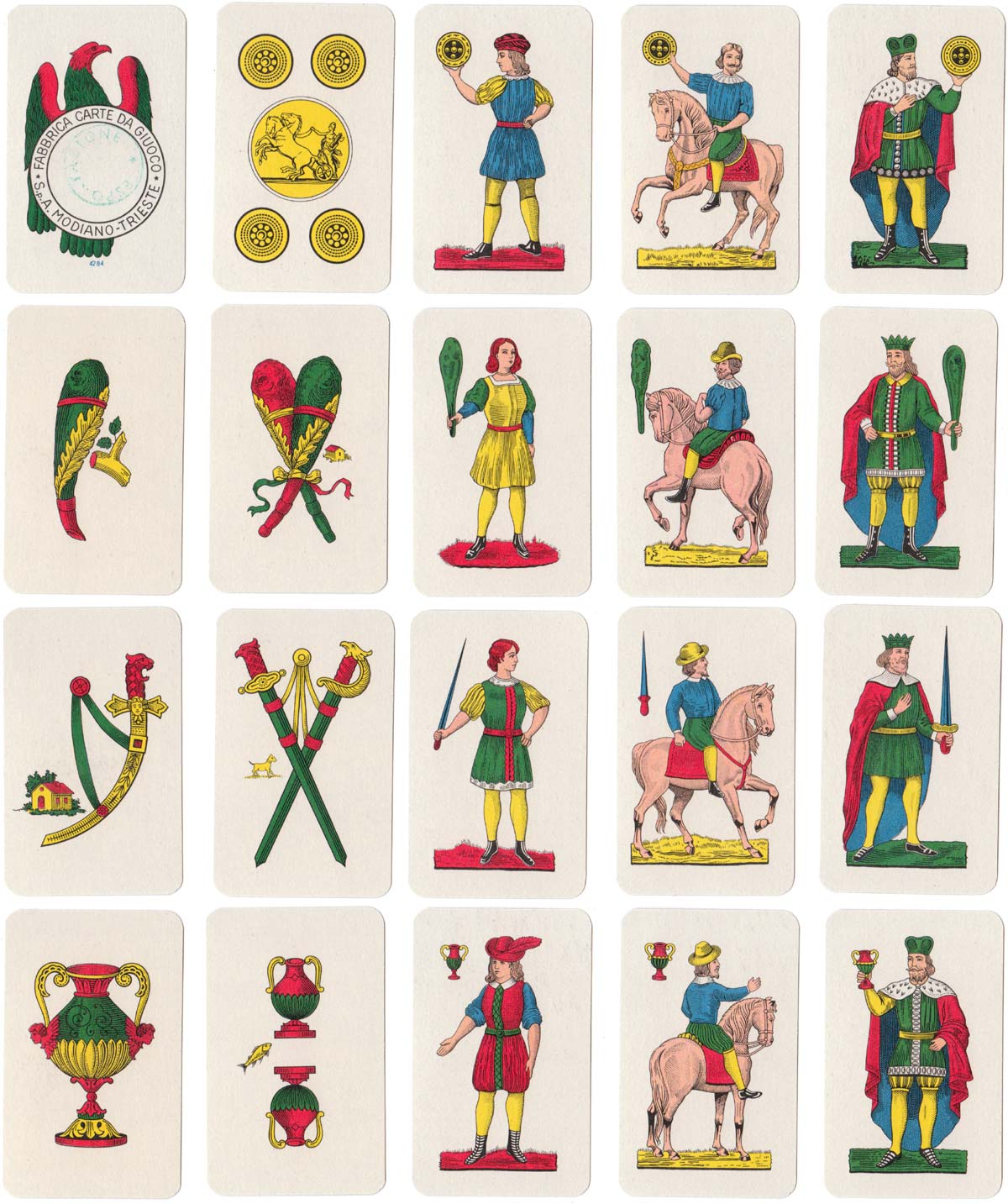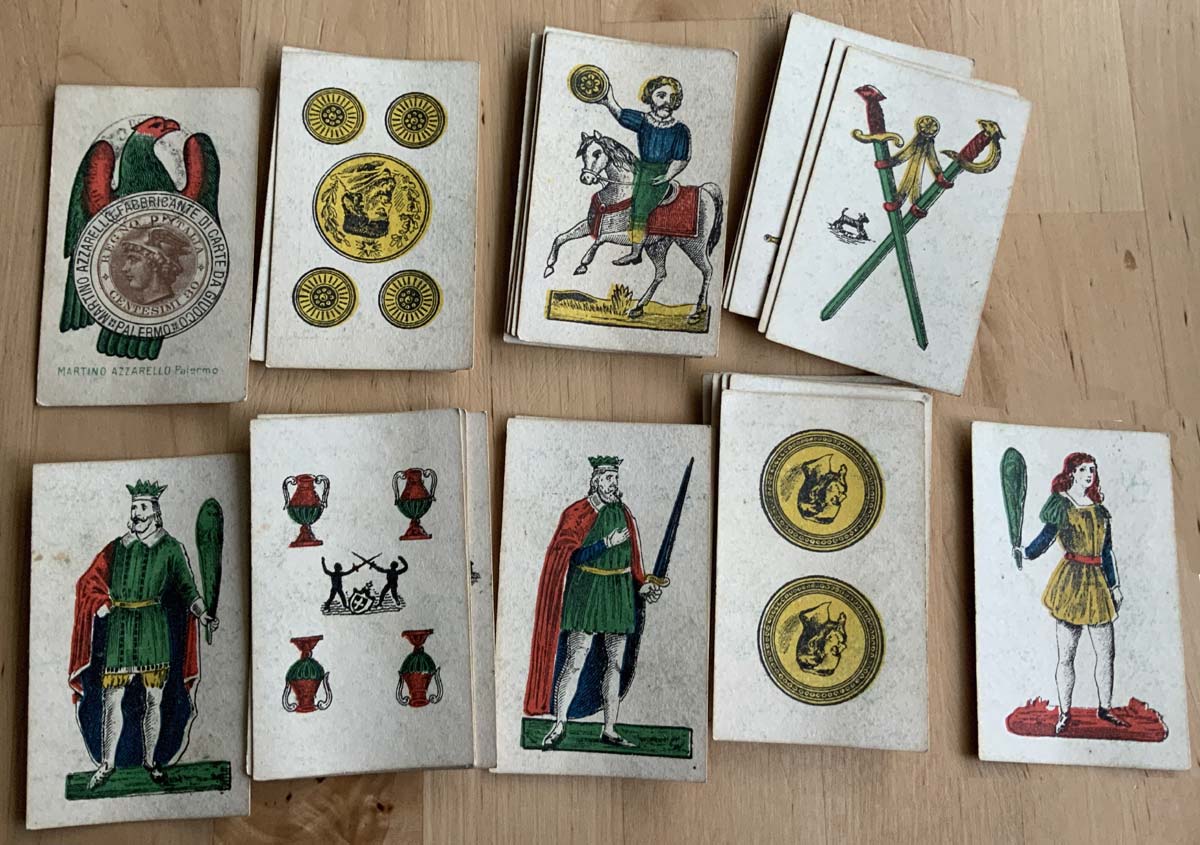Sicilian Pattern
The Sicilian pack has a similar composition to the Neapolitan pack, and is small and squat in appearance.
The Sicilian pack has a similar composition to the Neapolitan pack, and is small and squat in appearance. Each court rank stands on a different coloured plot - the kings on green, the knights on yellow and the (female) pages on red. Many of the numeral cards have vignettes on them, such as a small fish, dog, ship, house or a person, and the ace of coins has a single-headed eagle. The pattern is not confined to Sicily: in some southern regions of Italy, many players prefer it to the 'Napoletane'. Cards of Spanish style occur in those parts of Italy formerly under Spanish influence, such as Napoletane, Piacentine, Romagnole, 'Sarde' and Sicilian patterns.



Above: Sicilian pack made by Masenghini of Bergamo, dated 1942, with small vignettes on the numeral cards.

Above: Sicilian pattern by Modiano, c.1950. The ace of coins has an export stamp in pale green. See the Box► Images courtesy Rex Pitts.

Above: Sicilian pack by Martino Azzarello, Palermo, c.1910. Image courtesy Monica Thomas.
Further References
Salvatore Bonaccorsi, Nicola De Giorgio, Emilia Maggio: The origins of the “Portuguese” suit system for playing cards and tarots in Sicily►

By Rex Pitts (1940-2021)
Member since January 30, 2009
Rex's main interest was in card games, because, he said, they were cheap and easy to get hold of in his early days of collecting. He is well known for his extensive knowledge of Pepys games and his book is on the bookshelves of many.
His other interest was non-standard playing cards. He also had collections of sheet music, music CDs, models of London buses, London Transport timetables and maps and other objects that intrigued him.
Rex had a chequered career at school. He was expelled twice, on one occasion for smoking! Despite this he trained as a radio engineer and worked for the BBC in the World Service.
Later he moved into sales and worked for a firm that made all kinds of packaging, a job he enjoyed until his retirement. He became an expert on boxes and would always investigate those that held his cards. He could always recognize a box made for Pepys, which were the same as those of Alf Cooke’s Universal Playing Card Company, who printed the card games. This interest changed into an ability to make and mend boxes, which he did with great dexterity. He loved this kind of handicraft work.
His dexterity of hand and eye soon led to his making card games of his own design. He spent hours and hours carefully cutting them out and colouring them by hand.
Related Articles

Late flowering of the Lyon pattern
Faustino Solesio’s late version of the Lyon pattern from about 1870.

Czech National Patterns by S.D. Modiano
Modiano produced cards with the Prague and Trappola patterns in the early 20th century.

Emilio Tadini playing cards
Beautiful dreamlike playing card designs by Emilio Tadini.

Austrian Tarock by S.D. Modiano
Modiano’s Austrian Tarock with country scenes has been in production for over 100 years.

Le carte da gioco Arcimboldo
Courts and suit-signs inspired by the works of the Italian Renaissance painter, Giuseppe Arcimboldo....

22 Pittori in 22 Arcani
Collaborative Tarot with contributions from 22 different Italian artists including Menegazzi and Tav...

Justice playing cards
Ethical concepts in a deck produced by Riccardo Conturbia’s Passione Playing Cards Ltd.

Alan Tarot Deck
Reprint of a Tarock pack originally designed by Argio Orell for the Austrian Lloyd shipping company....

Il Tarocco del Mondo Nuovo
Imaginative Tarot card designs by Amerigo Folchi relating to Columbus and the New World.

22 Artisti Liguri in 22 Arcani
Collaborative set of major arcana devoted to Christopher Columbus and his voyages of discovery.

Carte di Colombo
Fully illustrated pack designed by Pier Canosa commemorating the 500th anniversary of the discovery ...

Carte di Natale
Designed by Pier Canosa as a Christmas pack for the Cortina Art Gallery in Milan.

Lyon pattern made in Italy by Pietro de Santi
The Lyon pattern was initially developed in France during the 16th century. As Lyon was a trading hu...

Laurenzo Propagine
Spanish-suited cards made in Italy by Laurenzo Propagine.

Il Tarocco Mitologico
Fully pictorial Tarot designed by Amerigo Folchi with figures mainly from Greek mythology.

Neapolitan pattern by Luigi Pignalosa, Naples
Two versions of the Neapolitan pattern from the British Museum by Luigi Pignalosa, Naples, 1875 & 18...
Most Popular
Our top articles from the past 28 days

